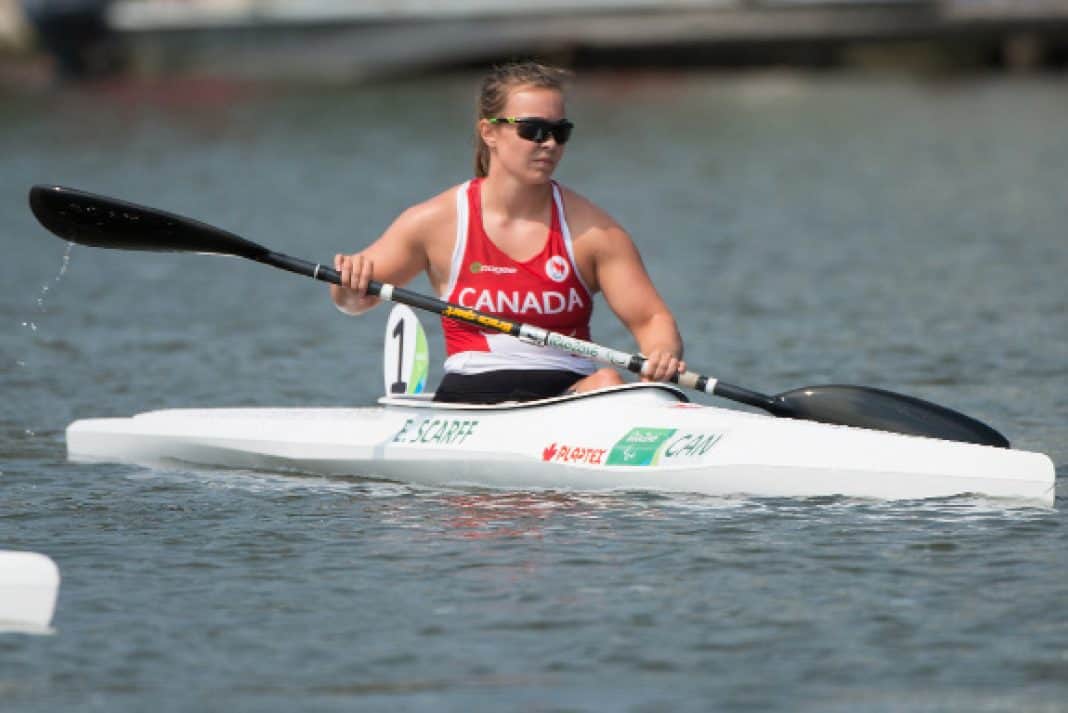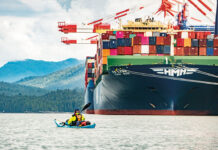There’s an elite new paddling sport gathering global steam. Paracanoeing emerged as a demonstration sport—then called “paddleability”—at the International Canoeing Federation Canoe (ICF) Sprint World Championships in Dartmouth, Nova Scotia back in 2009.
With the name changed to paracanoe, the event gained official ICF status in 2010 and made its Olympic debut in Rio de Janeiro in 2016. With the next Paracanoe World Championships set for August 21 to 24 in Szeged, Hungary, and the Paralympic Paracanoe Test Event happening in Tokyo in September of this year, things are lining up for an exhilarating contest at the games of the XXXII Olympiad in Tokyo next year.
There are two types of craft involved in paracanoe, a conventional racing kayak that is up to 17 feet long, 19.5 inches wide and at least 26 pounds in weight, paddled with a double-bladed paddle, and a second boat called a va’a, which is a more stable outrigger configuration paddled with a single blade. In both of these vessel types, there are three categories of athletes, who accrue classification points based on their ability to use arms, torso and legs to propel forward motion. These points are assessed based on medical ability reports as well as on-water evaluation by sports officials.
The races in all three categories put single paddlers against each other and the clock, racing a 200-meter (656-foot) flatwater course. At the moment, at least at the highest levels of competition, only K-boats are included in the racing schedule. As with all sports, improved equipment and more effective training have been dropping the winning times with every championship. In Brazil, the KL1 men’s winning times were in the 52-second range, with the women close behind in the 58-second range for gold. KL2 typically knocks off about 10 seconds from the KL1 times and KL3 mens times have broken the 40-second barrier with Ukraine’s Serhii Yemelianov winning gold in Rio with 200-meter time of 39.810 seconds, just six seconds off the K1-200 world record.
As a pre-Olympic year, 2019 has a succession of events to establish the field of men and women who will be on the starting line in Tokyo in 2020. This began with the Paracanoe European Championship and the ICF World Cup in Poznan, Poland in May and continues with the Pan American Paracanoe Championships in Sao Paulo, Brazil in July. Then it’s to the 2019 Worlds in Szeged, Hungary in August and the Paralympic Paracanoe Test Event happening in Tokyo in September of this year, leading to the games of the XXXII Olympiad in Japan next year. With representation from more than 50 countries and counting from Angola, Armenia, Argentina, Australia and Austria through the alphabet to Ukraine, Uruguay, USA, Uzbekistan and Venezuela, paracanoe is clearly a fan favorite and growing quickly in popularity for participants and spectators.
Although the Paralympics tend to play second fiddle to the main Olympic games both in terms of coverage and international exposure, paracanoeing may be changing this with its meteoric rise from demonstration sport to full-on competitive sporting marketplace in only a decade. The level of competition is high, the quality of the athlaetic performances is unparalleled, and how athletes of differing abilities and capabilities are brought under one sporting umbrella is impressive and inspiring (track and field might do well to have a look at para’s classification points system).
Paracanoeing likely won’t be on the main networks as much as it could or should be, but online coverage and event streaming are alive and well on the Internet and well worth any interested paddler checking them out and getting involved in rooting for the home team, whatever, whoever that might be.
James Raffan is an explorer, author, and former executive director of the Canadian Canoe Museum. Follow the action this summer at www.canoeicf.com.
Erica Scarff of Toronto, Ontario, is a member of Team Canada. Photo: CANADIAN PARALYMPIC COMMITTEE









